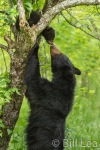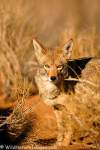
bobcat with kits, a doe with a new fawn, snowy owls, bear, swans, and porcupines. If you have chosen to live in a north woods rural area, here are a few tips for living along side wildlife or better yet, methods for coexisting with your wild neighbors. After all, these wild creatures you have chosen to live among were here first. Living along side wildlife requires respecting their habitat and teaching them how to respect yours as well.
In the news this week in rural norther Wisconsin.
Bears have been coming to close, Grantsburg Village Board and Wisconsin DNR took the first steps toward formulating a plan. It is unfortunate that this plan calls for lethal methods as a way to solve the problem between wildlife and humans. Has there been any measures taken to prevent these bears from coming into the village limits?
There are non lethal methods that north wood’s residents can use to deter wild animals..
- Keeping your pets safe.
- Don’t feed wildlife.
Other concerns for do not feed the birds including it may delay migration or changing birds habits.
- Wild animals are attracted to garbage and gardens.
- What to do when you encounter wild animals in your backyard.
Always keep a safe distance between you and any wild animal that has wondered onto your property. Use a loud device as a deterrent, such as a blow-horn, or fire crackers to scare these unwanted intruders away. Never throw these devices at or on the animal. The idea is to deter not to harm them.
Another wild animal deterrent called hazing which will teach them to fear you. Again, it is recommended to keep a safe distance away from any wild animal you encounter. Hazing method involves making yourself larger than the wild animal by waving your arms and shouting at the wild animal saying, “go away coyote!”
Other methods of hazing you can use are pepper sprays and a blow-horn is a very good deterrent to keep on hand. You may need to use these deterrents several times to make the unwanted wild animal get the message. Wild animals have a natural fear of humans and you may need to remind them of this natural fear.
There may be times when a wild animal could be dangerous. If the wild animals appears skinny and unhealthy or stumbles this could be a sign of Rabies. In this case stay away from the wild animal. Call local law enforcement. While you wait for them to arrive keep tabs on the whereabouts of the infected animals from a safe distance.
In summary, wild animals have a natural fear of humans. Living along side of wildlife requires keeping space between their habitat and yours. In other words, educate yourself on how to safely live with your wild neighbors.
Feature photograph is by Michael Crowley of Life in the Northwoods
source






No comments:
Post a Comment